We use affiliate links to run our site. When you buy through links on our site, we may earn an affiliate commission, without any added cost to you. Learn more
Are you ready to learn about the secrets of gardening with coco coir? This natural material is more than just a gardening medium; it’s a game-changer for plant lovers and eco-friendly gardeners.
Many people are searching for an alternative to traditional soil that can support plant growth and be sustainable. The challenge is finding a medium that can hold moisture, help roots grow strong, and be environmentally friendly.
This blog post will guide you through the wonders of coco coir and how it can revolutionize your gardening.
We’ll explore its composition, benefits, and different uses. By the end of this article, you’ll see why coco coir is not just a substitute for soil but a key to healthier plants, a more sustainable garden, and a greener future.
Buckle up, you’re about to embark on a journey that will change the way you garden forever.
What is Coco Coir?
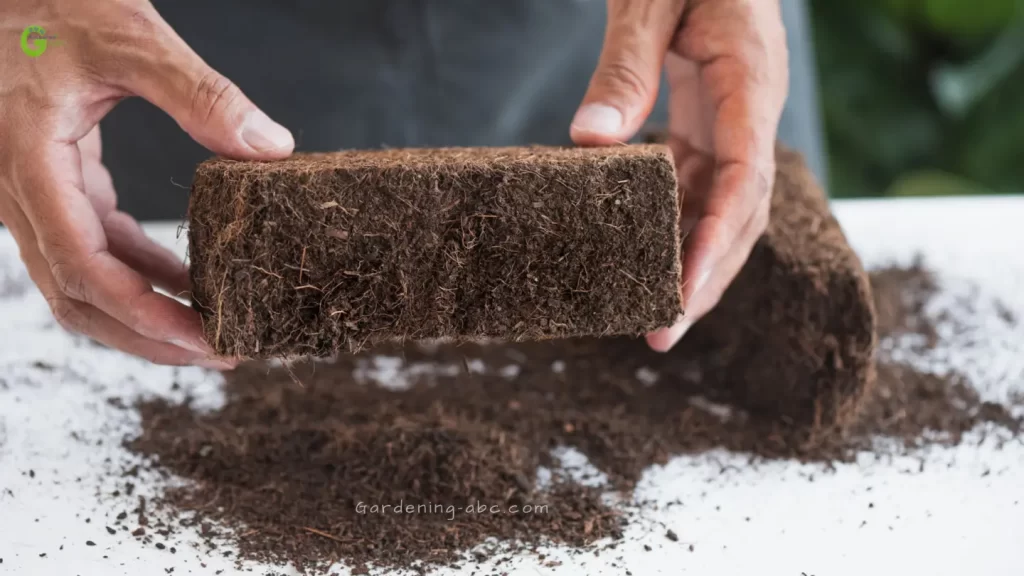
Coco coir often referred to as cocopeat, is a natural and sustainable growing medium. It’s made from fibrous coconut husks that have been compressed into blocks. It’s one of the best potting soil alternatives because of its ability to retain moisture.
It is an ideal growing medium because it holds moisture well and that makes it perfect for seedlings and cuttings.
Coco Coir is the perfect growing medium for hydroponic growers and gardeners who wish to add organic material to their garden or greenhouse. It is a very versatile material because it can be used in many ways.
The Composition of Coir: What Coco Coir is Made of?
Coco coir is a totally natural and renewable product. It is made from fibrous coconut husks that have been harvested, cleaned, and processed into small pellets.
It contains a good amount of cellulose and lignin. As mushrooms thrive on Cellulose, coir is a very good substrate to cultivate Mushrooms.
Is Coco Coir Acidic?
Coco coir can be neutral or slightly acidic. It generally has a pH level in the range of 6-6.5. which is a very good pH level for plant growth in most cases.
How To Make Coconut Coir?
The English word “coir” comes from the Tamil and Malayalam word “kayaru”, which means cord, to be twisted.
In a coconut, the place between the hard inner coconut shell and the outer coat is called the husk. It is the place from where we extract coir fibers. These fibers make up about a third of the coconut husks, The rest is called peat, pith, or coco dust.
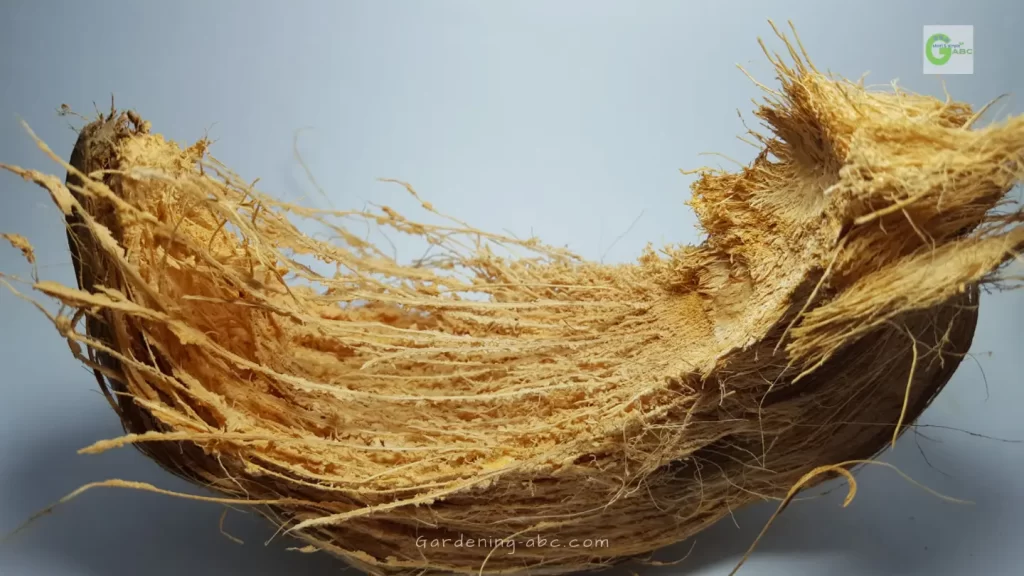
Coconut husks make an excellent mulch for planting. They help to retain moisture in the soil and protect plants from the hot sun. Coconut husks also help to keep weeds down.
Coconut Fibers or Coir Fibers:
Coir Fiber can be of two types:
- White fiber and
- Brown fiber.
When the fibers are extracted from the green coconuts it is called white fibers. One of the amazing features of white fibers is that they are resistant to saltwater.
Due to this, industries such as manufacturing rope, mats, and fishing nets use white coconut fibers a lot.
Brown fibers are extracted from fully matured coconuts. It is a key ingredient in making doormats, brushes, and mattresses. Coir fiber is a good solution for insulation and packaging.
The process of taking out the husk of the fruit is known as De-husking.
Coir Peat:
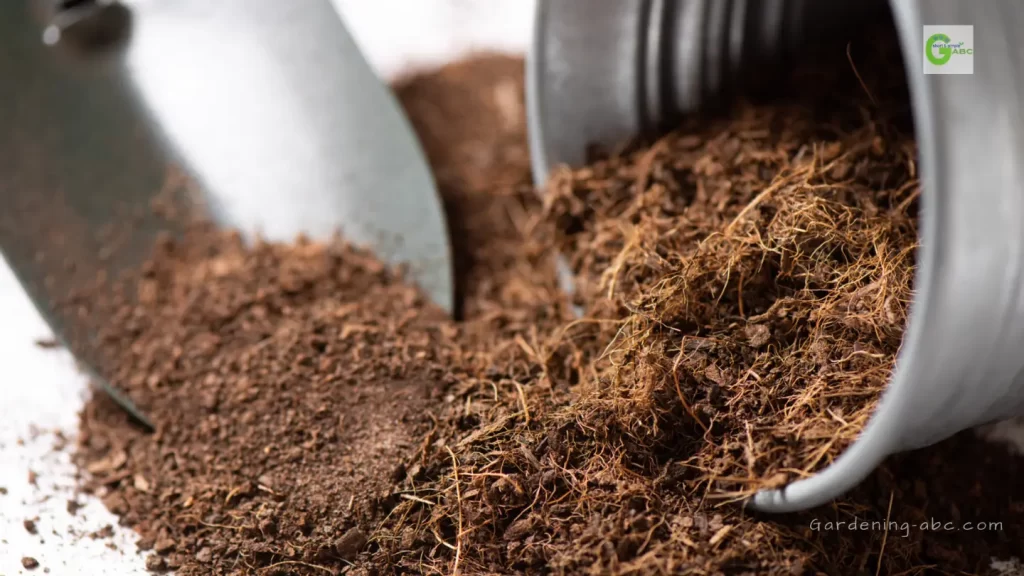
Once we extract the coconut fibers, we are left with coconut Coir, (or coir) or Coco peat (cocopeat). It is the second part of the husk and it covers most of the portion.
Coir was earlier thought of as a waste product, but now this is more of an alternative to peat moss in gardening.
People call this peat by various names. Coco coir, coco pith, coco peat, cocopeat, coco dust, coco coir soil, or only coir are broadly the same thing.
Coir provides a suitable substrate for horticultural use. It is widely used as a soilless potting medium. As coir is high in sodium and potassium, it sometimes contains excess salt.
Once considered a waste product, coco coir is now used as the best alternative to peat moss Click To TweetSo before using coconut coir for plants, this excess salt needs to be processed. To do this, it is first washed and then screened and graded into various granularity and densities.
Is Coco Coir Good for Plants?
Coco coir is an excellent medium for growing plants because it is very light in weight, can hold a lot of water, and allows air to flow through it freely. As a seed starter, coir is excellent.
Its porous structure can hold and distribute water evenly. It has the ability to absorb water like a sponge but releases the water when needed.
it is perfect for all plants but is especially helpful with hydroponics. If you are looking for something that will give your plants a strong root system, consider using Coco Coir.
It also helps control pH levels and nutrient levels in hydroponic systems due to its acidity and alkalinity.
They are also used by many people who grow indoors because of their texture and ability to not break down as other growing mediums do. It does well in both soil-based and hydroponic systems.
Why Coconut Coir is Used in Gardening?
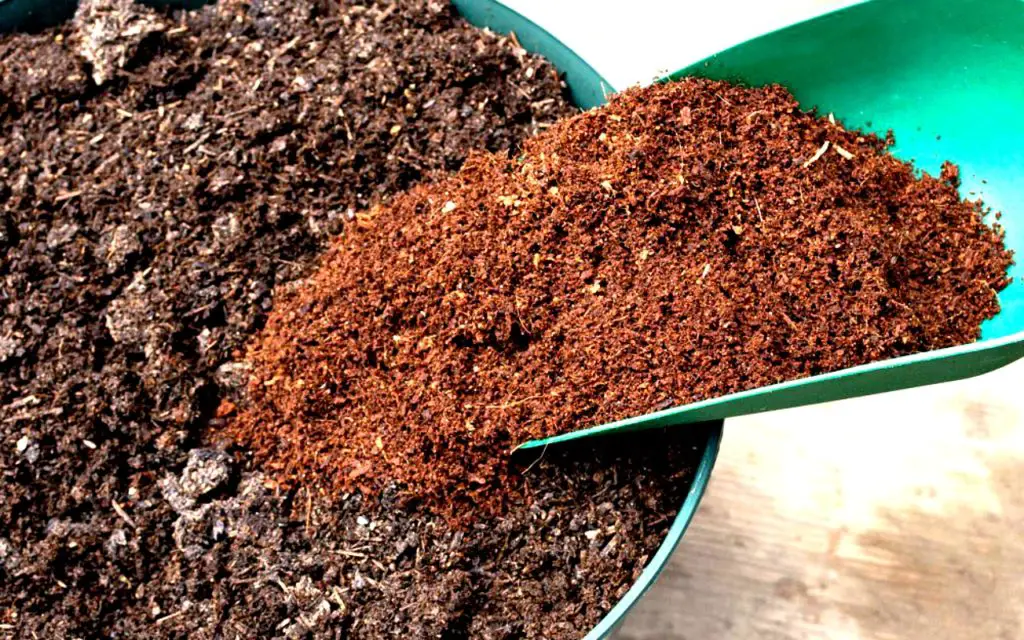
- Coir is a very good growing medium for plants and can be a good component of a high-quality potting mix.
- Most of the potting mixes available in the market still use peat moss as the base component. If you make your own potting soil, you can replace peat moss with a greener alternative like coco coir.
- Because of its organic and sterile nature using coco coir for growing seedlings can be a great choice.
- Coco chips promote the growth of tropical flowers and plants. It works both indoors and outdoors. Coco chips are also ideal for mulching and as a decorative ground cover that retains water and resists fungus.
- You can use coco dust to amend garden soil quality. Coir has an amazing water retention capacity. They can absorb more water than peat and is far easier to re-wet. Mixing coir with soil works great because:
- Coir improves soil aeration and moisture retention.
- It loosens the texture of clay soil and improves drainage.
- And, it allows the sandy soil to hold on to water longer.
- Processed coco coir is resistant to bacterial and fungal growth. It provides a lot of new opportunities to potting mix suppliers, seedling nurseries, Hydroponic growers, and greenhouse growers.
Can Coco Coir Replace Soil?
Yes, coco coir can be used as a replacement for soil, especially for urban homes where space constraints force people to look for an alternative material.
- Coir is very lightweight and can hold water very efficiently.
- You can never overwater coir as it has excellent drainage.
- Coir is excellent for starting seeds.
Due to its higher water-holding capacity than regular soil, coir is ideal for gardening during dry seasons. It will keep the medium moist even if you forget to water your plants on time.
With plenty of air pockets, the roots get enough oxygen supply throughout the day. Because it comes from coconut shells coir is free of any harmful chemicals or fertilizers too.
Having said that you cannot grow plants solely on coco fibers. It lacks basic plant nutrients. The best way to use coco coir is to mix it with other growing mediums, soil, and compost and make it an ideal medium for growing plants.
How To Use Coconut Coir For Gardening:
Coir is an excellent soil enhancer. In gardening, you can use coconut coir to make an excellent potting mix and to improve the soil quality in your garden.
But rarely you will find coco coir in a ready-to-use format. After getting the coir you have to first prepare it for plants.
How To Prepare Coco Peat For Plants:
Coco coir is generally sold in compressed blocks in the form of bricks and bales.
The good thing about this is that it’s easy to transport and store but you can not use these coco coir bricks directly in gardening. You have to first prepare the coco peat for plants by soaking those bricks in water and converting it into a loamy texture.
How to Reconstitute a Coir Brick:
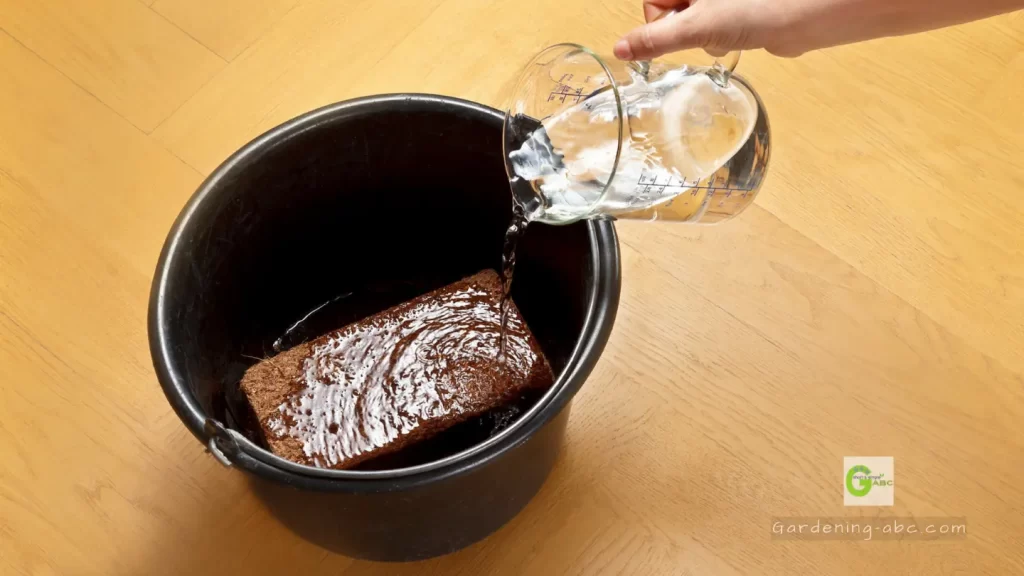
Before reconstituting a coir brick please read the label. It generally informs you how much water you need to convert the coir brick into a loamy usable form. Add water per the label’s instructions.
First place a coir brick in a large container. These bricks can increase about 5-6 times in volume; ensure your container is large enough to hold it. Then add enough water to the bricks.
Wait for some time so that the brick can absorb the water. The time varies from brand to brand.
The outer portion of the coco coir brick will first start to soften. Break and crumble the softened portion it will speed up the process. Don’t worry if it seems like all you have is a muddy mess. If you expose the entire brick, it will absorb the water.
Once the bricks are soaked properly, you can mix the material with your hands or cultivator to fluff the loose coir. This coir is now ready to use for growing plants. It will remain loose, even when dry, and will last for years.
A standard 5 kg coco coir brick (about 12.5 x 12.5 8 in. or 32 x 32 x 20 cm) will be able to make approximately 60 liters of coir.
Is Coco Coir Organic?
Coco coir is organic as it comes from the coconut tree. No chemicals are present in the coir and it is naturally weed-free.
This coir is biodegradable but it biodegrades slowly, more slowly than regular peat moss and other organic matter.
Coir doesn’t smell foul. As a soil amendment, it also adds organic matter to your soil.
Different Types of Coco Coir:
Coir can be of two types:
- sterilized coco coir and
- unsterilized coco coir.
Sterilized Coco Coir:
Sterilized coco coir is generally used for hydroponics and aquaponics. You can also compost this material after use. This type of coco contains no pathogens or any other harmful substances that could hurt the plants or the environment.
Unsterilized Coco Coir:
Unsterilized coco coir is used for growing plants in soil. Although it can be used for hydroponics, it is not recommended because the pathogens can affect the plants negatively.
How to Sterilize Coco Coir:
Sterilizing coco coir is an important step in ensuring that your plants thrive. You can kill off any harmful bacteria or fungi that may be present in the coco coir.
There are two ways to sterilize the coco coir:
- Using hydrogen peroxide and
- Using chlorine bleach
Sterilizing With Hydrogen Peroxide:
Use 2 ml of 35% food-grade hydrogen peroxide per liter of water. Once the mixture is ready, soak the coir into the mixture for 4-5 hours. After that rinse the coir thoroughly with clean water. Now your coir is fully sterilized.
Sterilizing With Chlorine Bleach:
If you don’t want to use hydrogen peroxide you can use chlorine bleach to sterilize your coir. Use 5% bleach and mix it with water. For 1 kg of bleach, you will need 5 liters of water.
Soak the coir for 4-5 hours. Then remove the coir and rinse it (till the smell is gone totally) with clean water.
In sterilized coir peat, the fungi Trichoderma is not present due to sterilization.
Trichoderma works in symbiosis with plant roots. It protects plants from harmful pathogenic fungi such as Pythium. This is why people nowadays are shifting from using sterilized to unsterilized coir.
For full information on how to sterilize coco coir see this post
Peat moss vs coco coir:
When it comes to choosing a growing medium for your plants, you may be wondering whether to go with peat moss or coco coir. Both have their advantages, but coco coir has some clear benefits over sphagnum
- Although many firms in the peat industry are trying to harvest and manage peat bogs at a responsible, sustainable rate, demand is so high, it is safe to say peat is more of a non-renewable source. Coconut coir is not only a natural, organic product but unlike peat moss a renewable one.
- Coir is hydrophilic. Unlike peat moss, it can quickly re-absorb water even when completely dry. Coco peat is porous you cannot over-water it easily.
- Coir is slow to decompose and lasts longer in the soil.
- It is both sterile and free of weed seeds.
- The coir pH is far less acidic (5.8 – 6.8 range) than that of the peat moss (3.5 – 4.5 range).
- Coco coir Improves the aeration and moisture retention qualities of the soil.
- Coir also provides resistance to pythium and other root diseases.
Disadvantages Of Using Coir:
- The downside of using coir is that coir has very little amount of calcium or any other nutrients. Sometimes they are rich in potassium and a few micronutrients.
- Coir tends to compact, you might have witnessed this by yourself if you have handled a coir brick before.
- Because it retains water, there is a chance of salt build-up.
- Depending upon your location coir can be more expensive than sphagnum peat moss.
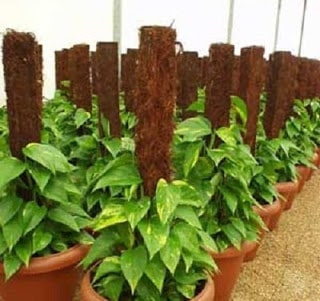
Does Cocopeat Have Nutrients? Can We Grow Plants Only In Coco Peat?
You should not use coir as the sole medium for growing plants. The nutrient content in coir is very low. If you insist on growing solely on coir, add some nutrient solutions as per the needs of the specific plants.
Coir from countries like India and Sri Lanka contains several micro plant nutrients including a large quantity of potassium. This potassium interferes with the magnesium availability in the soil.
Generally, coir has a deficiency of Calcium and Magnesium. To remove this problem add a good amount of dolomite to your coir. The Dolomites contain both calcium and magnesium and can be a solution to the problem.
Can Cocopeat Be Composted?
Although coconut coir is a biodegradable product it degenerates very slowly. But this should not stop you from using them in compost.
Don’t use coir as a main composting ingredient but to supplement the ingredients. Add composting ingredients in layers alternating with a 1-inch layer of coco coir.
Coir is a good absorbent. So it will absorb the nutrient-filled extract when the ingredients start to decompose. Coir is also a good deodorizer. So it will purify if there is any foul smell that results from composting.
The fungus Trichoderma present in coco coir produces enzymes that will also fasten your composting process.
Other Uses of Coco Coir:
Apart from agricultural usage, you can use dry coir as an oil absorbent, especially on slippery floors. It has a very good absorbing ability. People also use it to absorb animal wastes.
Conclusion:
In conclusion, Coco Coir is a real game-changer for gardening. It’s more than just a growing medium; it’s a green revolution in a brick. Coco coir breathes life into your plants, offering a natural, eco-friendly alternative to traditional soil. Its ability to retain moisture and promote robust root systems makes it a must-have for gardeners of all levels.
At the start of this article, we promised to share something fantastic about gardening with you, and we hope we delivered. Now, as you think about using coco coir in your garden, ask yourself, “How can this natural stuff make my gardening better?”
Share your thoughts and experiences with Coco Coir in the comments below, and let’s build a community of Coco Coir fans.
But our exploration of gardening doesn’t end here; it flourishes with every season. Stay tuned for upcoming articles where we’ll delve deeper into specific plants and techniques that thrive with coco coir. Your garden is about to become a haven of lush greens and flourishing blooms.
As you step away from your screen and into your garden, let coco coir be your green ally. Experiment with different plants, mix it with your soil, and see the magic unfold.
Embrace this change, and let your garden flourish in coco coir’s embrace. Thank you for joining us on this journey. Your commitment to sustainable gardening is the first step toward a greener, healthier planet. Stay tuned for more gardening inspiration and tips.
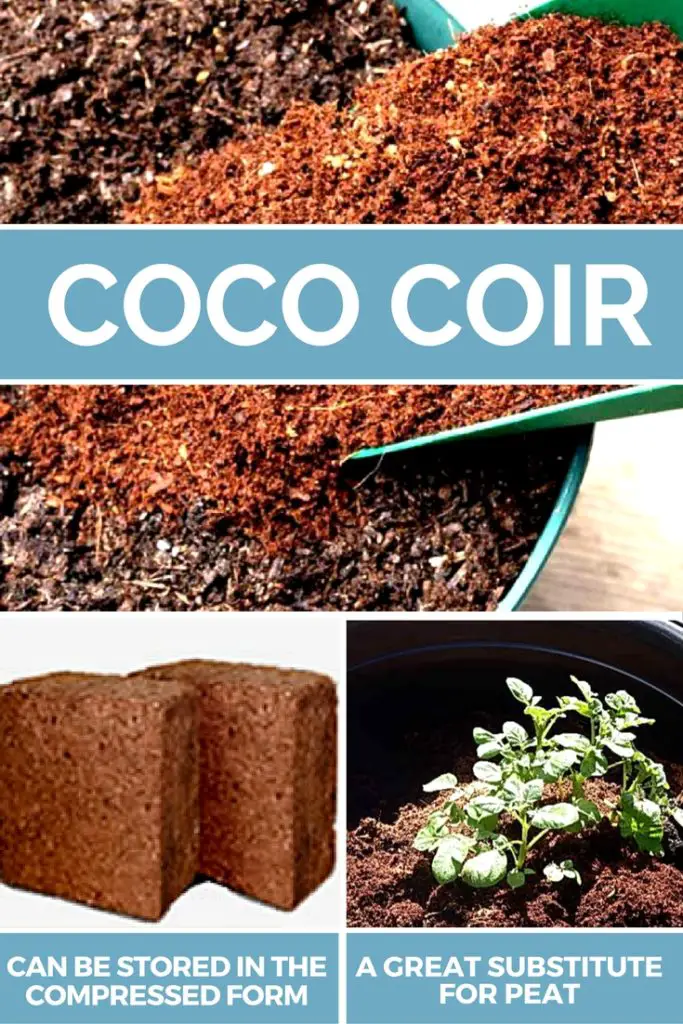
Amazon and the Amazon logo are trademarks of Amazon.com, Inc, or its affiliates.
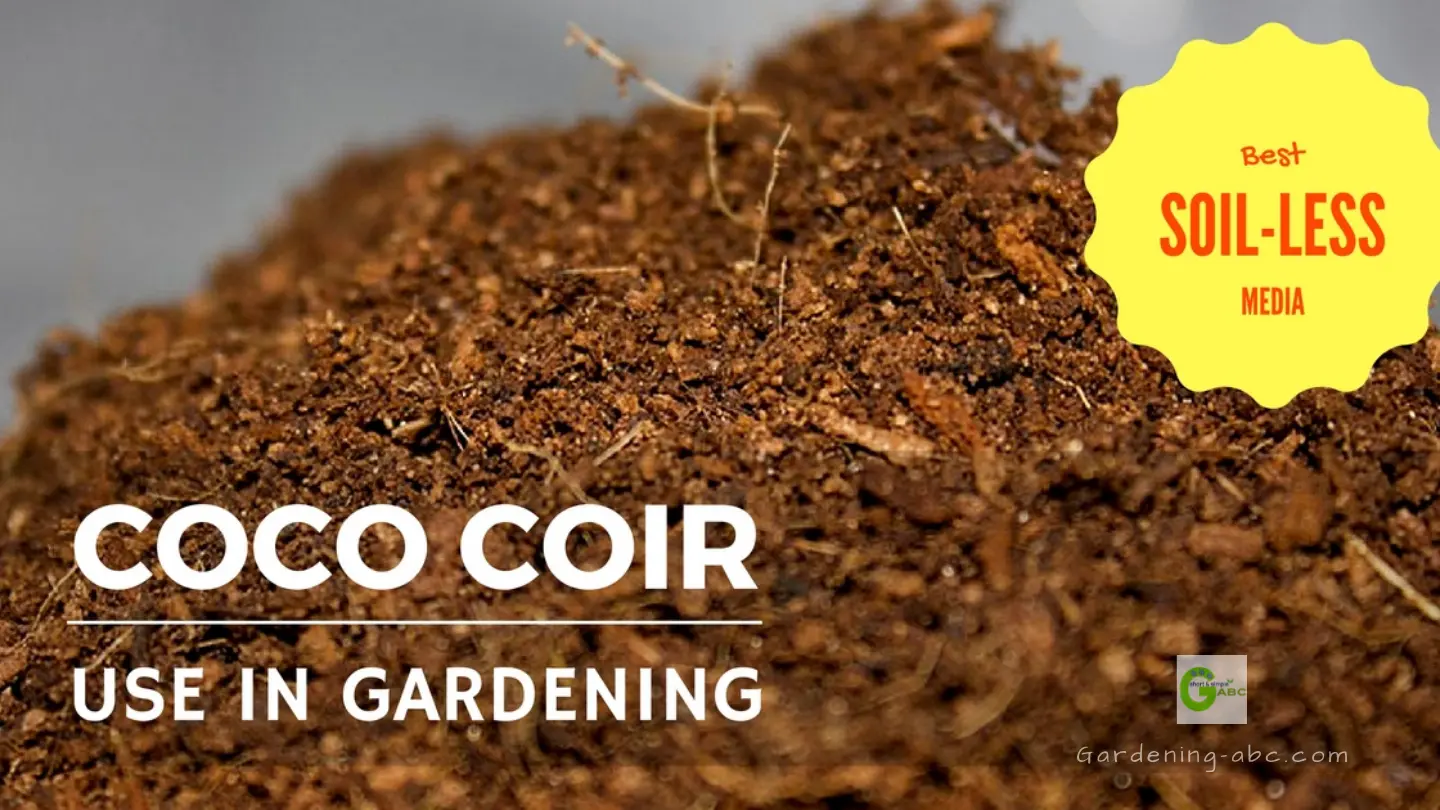
Coir has really great qualities and usages for seed starters, bedding, gardens…. all agriculture needs. Great!!!!!!!……
Thanx and you are absolutely right. 🙂
Thanks a lot , you are absolutely right.
But there is availablity issue atleast in north !!!!!
I use cocopeat in my garden alongwith regular soil and sand and has a very good effect on plant growth. Of course, I add some nutrients regularly. — r.k.rajagopalan.
We are Firstlock ltd. We produce high quality coco peat, at very competitive price.
thank you.
I hope you can also feature self-irrigating planters in your next post.
if i have a fresh coir, how do i prepare it to be suitable for vegetable gardening? do i need to have it sun-dried or can i mix it the regular plot soil immediately?
Its nice that you mentioned about adding nutrients. Cocopeat doesn't contain any nutrients for the nutrition of a fully grown plant. So adding nutrients is a must. Try not to add any chemical though. Compost is a very good option.
Things will change very shortly. Some companies have started the whole India distribution channel.
Thanks for the suggestion. I will definitely give it a thought.
Fresh coir contains high amount of electrolytes. This needs to be washed out and sun dried several times before using. It can be a tedious job.
I use about 1 part in 3 coconut coir in my seedling germination mixes with compost, soil and a bit of charcoal. It's great stuff and I highly recommend it.
Yes Coconut Coir and its use as a Soil-less Growth Media Plant..I agree with Your Article.
Thanks & Regards Coco peat supplier
We are taking commercial crop on cocopeat slab under strict IPM measures in Saudi Arabia. Quite promising results.
We are commercial vegetable producer in Saudi Arabia. Growing cucumber, tomatoes on cocopeat slab very healthy without prblem – quality, bumper harvest with color, taste n flavor.
This comment has been removed by the author.
Does the ph of coconut coir reduce over a period of time (like 6 months)? I have been using soilless media having coconut coir, vermiculite, humic acids main ingredients. I didn't check ph initially but when yield was not good, I checked the ph and found it to be 4.5. Please let me know your opinion.
One more query please, should the loose coco coir available in bags at gardening shop also be washed and sun dried before using as plant media?
4.5 is very acidic for plants to grow. Try adding some lime to increase the pH level.
Loose cocopeat is generally the sterilized one. You don't need to wash and sundry it. But check the EC level before purchasing. Low EC is better for the plants.
Dear Sir
Kindly Explain the Process of Making Coco Peat ( Washed & Unwashed).
Dear Sir
Do Have any idea that how much Quantity of Fiber & Coco Peat can be Produced per Husk on an Average?
Dear Sir
What is shelf life of coco peat ?
Mr. Azimi,
Where can I find Coco peat in Saudi Arabia?
This comment has been removed by the author.
Agrihypermart As per the Coir Board it is 600kg of peat and 150 kg of fibre for 1000 husk. I am starting a composite unit for cocopeat and fibre very soon i will let you know exactly
This comment has been removed by a blog administrator.
This comment has been removed by a blog administrator.
Your composing is purely awe-inspiring that I desired to read such high quality material…The Tree Center
Can I add Coco Peat to soil in the field for planting tomato? It's summer here and adding coco peth so that it can hold water. What is the standard process of adding to soil in the field? What's ratio?
Thanks.
Great sharing! It is truly essential that knowing the health benefits of coconut and coconut oil. Everyone should aware of its benefits and important functional advantages.
http://vashiniexports.com/
Mr. Akram,
In my opinion you need to Import it from other countries like India , Sri Lanka etc…
Can coir can be used as a material for concrete to have additional strength??
Can anyone help me out with the process of making Coco peat,i am planning to start this as a business so what sort, of machines i need and where can i buy and someone pls advice me.Thanks
hi
where your contry?
Am in the business already, I can put u through in the process. Do you have buyers already?.
Great post! Have nice day ! 🙂 vfyes
Great post! Have nice day ! 🙂 1f5bw
Great post! Have nice day ! 🙂 a2ooj
thanks for sharing your thoughts
I am in fact glad to glance at this website posts which consists of lots of useful information, thanks for providing these kinds of data.